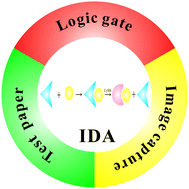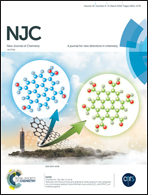A selective colorimetric sensing strategy for cysteine based on an indicator-displacement mechanism†
Abstract
Rapid determination of cysteine in aqueous solution is important for the diagnosis and treatment of some diseases. We herein present a simple yet facile colorimetric indicator-displacement assay for cysteine in aqueous solution with a sensitive optical readout based on the competitive binding affinity between the 1-(2-pyridylazo)-2-naphthol (PAN) indicator and cysteine target towards the host Zn2+. In the absence of cysteine, Zn2+ can induce an appreciable yellow-to-pink color change for the PAN solution through the formation of a PAN–Zn2+ complex. However, adding cysteine to the above PAN–Zn2+ complex solution resulted in a ligand exchange reaction between PAN and cysteine with about 57 nm blue-shift in the absorbance maximum (from 527 nm to 470 nm), accompanied by a visible color change of the solution from pink to yellow. The obtained indicator-displacement assay provides a good detecting performance for cysteine with a detection limit of 7.32 μM (S/N = 3) using a UV/vis spectrometer as well as with a good linear range from 25 to 1000 μM. In particular, the proposed sensing system could be successfully used for the fabrication of a colorimetric INHIBIT logic gate and converted into the test paper and image capture analytical devices for the onsite visual determination of cysteine in practical applications.



 Please wait while we load your content...
Please wait while we load your content...